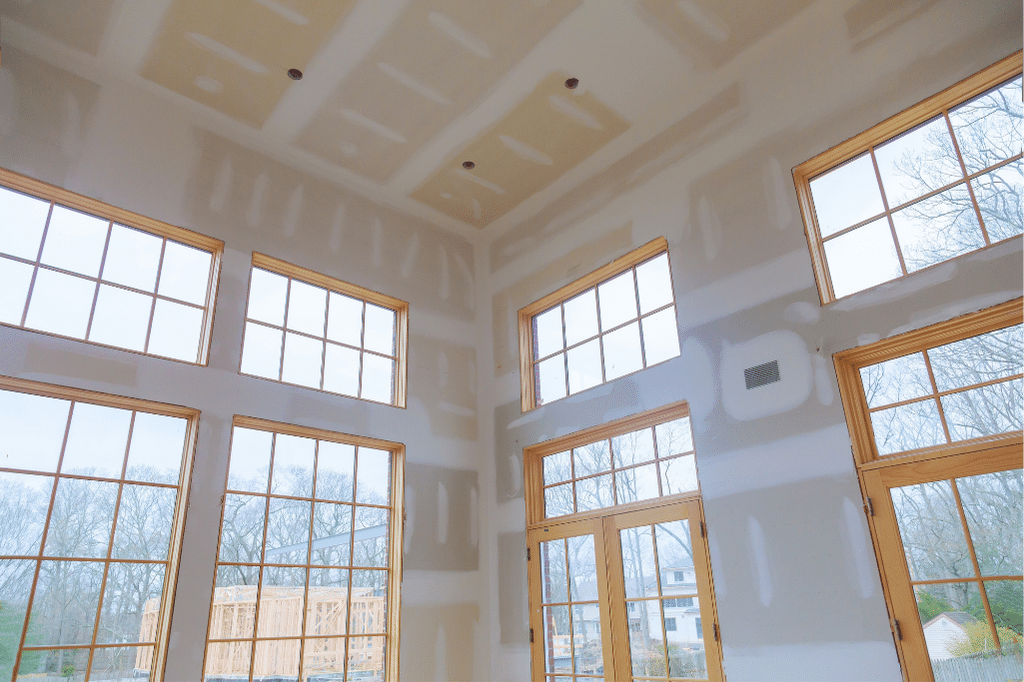Professional Drywall Contractor Services for Your Home Improvement
Professional Drywall Contractor Services for Your Home Improvement
Blog Article
Drywall Setup Facilitated: Tips for Perfect Results
Drywall installment is commonly perceived as a complicated job, yet with the best strategy and knowledge, it can become a manageable endeavor. Picking quality materials and preparing the setup area are essential initial steps that establish the structure for success. Understanding methods for reducing, hanging, and completing drywall can substantially impact the end result. As we explore these essential pointers, you might locate that also the tiniest changes in your technique can cause extremely boosted outcomes, leaving you to think about exactly how these practices can change your next task.
Choosing the Right Materials
Choosing the proper materials for drywall installation is essential to achieving a long lasting and aesthetically pleasing coating. drywall contractor. The primary component, drywall sheets, generally come in different thicknesses, with 1/2-inch sheets being basic for indoor wall surfaces. For areas needing additional dampness resistance, such as bathrooms or cooking areas, take into consideration using eco-friendly board or concrete board, which are specifically made to endure moisture

Additionally, picking the right fasteners-- either screws or nails-- is vital for safeguarding the drywall to the framing. Drywall screws are typically preferred for their holding power and lowered threat of popping. Lastly, consider the finishing touches such as guide and paint, which not just boost the appearance however additionally safeguard the drywall from dampness and wear.
Preparing the Setup Location
Prior to beginning the drywall installment process, it is important to prepare the setup location completely. A clean work area decreases the threat of damages to existing items and allows for reliable motion during installation.
Next, inspect the walls and ceiling for any type of blemishes, such as splits, openings, or mold and mildew. Address these problems beforehand; spot any problems and permit enough time for repair work to completely dry. In addition, ensure that electric outlets, switches, and pipes are effectively positioned and made up, as this will affect drywall placement.
Take into consideration the environmental problems. A steady temperature and humidity level are crucial for optimum attachment and performance of the drywall materials. If necessary, make use of a dehumidifier or heater to develop suitable problems.
Cutting and Hanging Drywall
The key to effective drywall installment exists in the precise cutting and hanging of the panels. Begin by determining the room precisely, thinking about any obstructions such as electric outlets or windows. Utilize a straight side and an utility knife to rack up the drywall along your dimensions, then break it along the racked up line for a clean break. For more detailed cuts, such as around outlets, a drywall saw can be made use of for precision.

Always work from the top down and delegated right, making certain that you keep a staggered pattern to boost stability. Properly hanging the drywall sets the structure for a smooth surface, inevitably leading to exceptional outcomes in your drywall job.
Taping and Mudding Techniques
While appropriate cutting and hanging of drywall sets the phase, the following crucial action includes mastering taping and mudding methods to make certain a smooth coating. Taping is vital for strengthening joints and preventing splits; it involves installing tape into the applied joint compound (mud) Beginning with a high quality fiberglass or paper tape, applying the tape over the joint and pushing it into the damp mud using a taping knife, ensuring no air bubbles continue to be.
When the tape remains in area, apply a thin layer of joint compound over the tape, feathering the edges to develop a smooth transition to the drywall surface. Enable this layer to dry completely before sanding it gently to eliminate flaws. Repeat this process, applying additional layers of mud as necessary-- normally a couple of layers-- while slowly expanding the application area with each layer to accomplish a smooth look.
After the final coat dries, sand the surface with a fine-grit sandpaper until smooth. drywall installation. Remember to use a mask throughout fining sand to avoid inhaling dust fragments. Mastering these taping and mudding techniques is important for accomplishing a professional-quality surface in your drywall setup
Completing Touches for Perfection
Achieving a perfect drywall setup goes beyond mudding and taping; it culminates in the finishing touches that elevate the total look. These last actions are crucial in guaranteeing a professional-grade finish that improves the visual appeals of your area.
Begin by fining sand the dried joint substance to develop a smooth surface. Utilize a fine-grit sandpaper and a fining sand article source block or pole sander for optimal control. Pay certain focus to sides and corners, as these areas tend to need more thorough job. After fining sand, wipe down the wall surfaces with a damp cloth to get rid of any dust particles, guaranteeing a clean surface area for painting.
Following, use a guide specifically made for drywall. This action is crucial, as it assists seal the joint compound and supplies an uniform base for the topcoat. As soon as the primer dries, check for any flaws, and retouch as required.
Verdict
In conclusion, effective drywall installation pivots on the cautious option of products, comprehensive preparation of the installment area, and specific implementation of cutting and hanging methods. Proficiency of taping and mudding procedures is important for accomplishing a smooth coating.
Drywall installment is typically regarded as a difficult task, yet with the ideal strategy and knowledge, it can become a workable endeavor.Choosing the ideal materials for drywall setup is crucial to attaining a durable and visually pleasing surface.Before starting the drywall installment process, it is essential to prepare the installation area completely. Grasping these taping and mudding techniques is vital for achieving a professional-quality surface in your drywall installation.
In important source conclusion, successful drywall installment hinges on the careful choice of products, detailed prep work of the installation location, and exact execution of cutting and hanging techniques.
Report this page